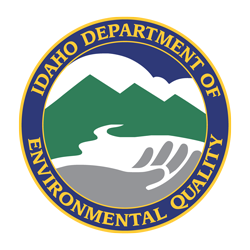February 18, 2021
BOISE — The Idaho Department of Environmental Quality (DEQ) is seeking a contractor to perform stabilization work within the Triumph mine tunnel. This project will ensure safe access to the tunnel to evaluate and complete longer-term tunnel stabilization or closure work over the next few years.
The project is necessary because the original materials used to stabilize the tunnel in 2001 have exceeded the design life. This has created unstable conditions within the tunnel resulting in collapse. Although the tunnel conditions require repair, these conditions do not affect the stability of the permanent concrete plugs installed within the tunnel. The two plugs remain in stable condition and continue to perform as expected.
Failure to complete longer term stabilization work or permanently close the tunnel will result in continued collapse. This could create instability at the ground surface or cause the release of mine water and debris from behind the collapsed material. The work planned over the next few years will more fully address these issues.
The Triumph Mine is an inactive silver, zinc, and lead mine located in Blaine County, Idaho. The mine operated from the late 1800s until the 1950s, leaving behind high levels of heavy metals in the soils and water. During active mining operations, the Triumph tunnel was used to transport ore from the mines to the mill located near the town of Triumph, Idaho. Cleanup efforts at the Triumph site began in 1998.
In 2001, as part of the cleanup, the Triumph tunnel was re-opened and stabilized for approximately 1,300 feet to allow for construction of a 16-foot thick concrete plug within the tunnel. A second, 17-foot thick concrete plug, located 235 feet within the tunnel, was constructed in 2016. The plugs were designed to prevent the discharge of polluted mine water and debris from the mine.
Construction of the mine plugs reduced the amount of mine water discharge from 100 to 200 gallons per minute to just 7 to 10 gallons per minute today. In addition, the reduced mine water flow significantly reduced levels of heavy metals discharging from the mine.
Staff Contact
Don Carpenter
Senior Mining Scientist
Don.Carpenter@deq.idaho.gov

